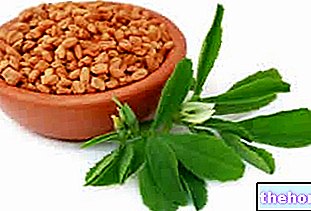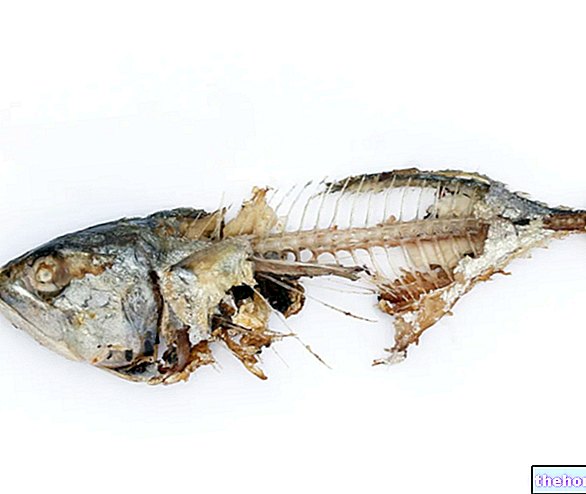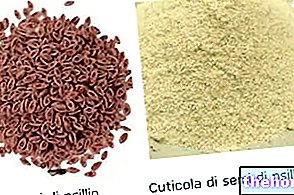
About Omega 3 Isatori
OMEGA 3 ISATORI
Food supplement of essential omega 3 fatty acids
FORMAT
Pack of 90/180 pearls
COMPOSITION
Fish oil (standardized in 75% omega 3); capsule (gelatin); emulsifier (glycerol); antioxidant (natural tocopherols)
Nutritional indications
Average analysis
For 1 capsule
For 4 capsules
Energy value
8.8 Kcal / 37 Kj
35 Kcal / 147 Kj
Lipids
1 g
4 g
of which saturated
0 g
0 g
Monounsaturated
0.13 g
0.5 g
Polyunsaturated
0.75 g
3 g
Concentrated fish oil
1000 mg
4 g
Total Omega 3
750 mg
3 g
of which EPA
400 mg
1.6 g
DHA
200 mg
0.8 g
Product features Omega 3 Isatori
Product features: this omega 3 supplement offers 1 gram capsules titrated at 75%. More precisely, reading the label carefully, we note that of the 750 mg per capsule, only 600 mg in total are EPA and DHA, however, it is among the commercial supplements with the highest dosage. The presence of tocopherols, natural antioxidants in able to protect these fatty acids from lipoperoxidation. Although the company supports the very high quality of this supplement, obtained by multiple molecular distillation, IFOS certification is missing.
Omega 3 fatty acids - fatty acids characterized by the presence of several double bonds, the first of which is present on the third carbon starting from the carbon in omega.

- Anifinammatory effect: highlighted by the significant reduction of inflammatory markers, and by the protective action against associated pathologies; this mechanism could in part be determined by a modulation of the intracellular signal, and in part by the displacement of the equilibrium towards the synthesis of prostaglandins and thromboxanes with anti-inflammatory activity;
- Anti-arrhythmogenic effect: probably associated with the structural role of these substances, which are part of the organization of myocardiocytic membranes;
- Antidiabetic effect (type I diabetes): to be considered with due care, and probably closely linked to the protective effect on inflammatory damage in the pancreas;
- Protective effect against psychiatric pathologies such as depression, probably guaranteed by the protective action against the central nervous system.
Recent evidence has also identified a new therapeutic and commercial application for alpha linolenic acid, determined by the inhibitory action against the alpha 5 reductase enzyme (responsible for the metabolism of testosterone and its androgenic effects), which can be transformed into a "protective action. and useful preventive in the treatment of prostatic hypertrophy and androgenetic alopecia.
Omega 3 and well-being of the sportsman
As it emerges from the reading of the previous paragraph, omega 3 fatty acids play a particularly important role for human health. Of course, many of these effects are perfectly suited to the needs of the athlete, and are able to minimize some of the most common damage induced by exercise, many times responsible for a significant decline in performance and performance of the athlete. Particularly:
- The anti-inflammatory action could be useful on the one hand in protecting the muscles from damage induced by intense physical exercise, on the other in protecting the ligament and tendon structures;
- The antiarrhythmogenic and vasodilating action has proved useful in "increasing" cardiac ejection and in supporting the oxygenating capacity of the organism during even intense efforts;
- The action on the respiratory system would be able to support the ventilatory capacity of the athlete.
Of course, it is important to consider how these effects derive from a supplementation protocol that is adequate to the needs of the athlete and that is carried out with the aim of optimizing the ratio between omega 6 and omega 3, the imbalance of which would determine the onset of various disturbances.
Method of use recommended by the company - Omega 3 Isatori
Take 2-4 capsules a day before a meal
Method of use in sports - Omega 3 Isatori
The ingestion of 4 capsules a day would guarantee the intake of about 2.4 grams of EPA and DHA, a dosage that falls perfectly within the range proposed by the various studies, despite the fact that in some of these, daily quantities of even more than 6 grams are used. The intake should be preferred at main meals, thanks to the "bile-mediated" absorption (necessary given the lipid nature). The integration plan should last for at least 4 weeks, as proposed by the studies. In reality, the correct integration should take into account the dietary intake not only of the omega 3, but also of the omega 6, since - for the supplementation to be effective - it is necessary to rebalance the relationship between these two forms.
Synergies - Omega 3 Isatori
Several studies show a greater efficacy of action by associating the omega 3 with antioxidant substances capable of assisting the protective action on the stability of the plasma membranes.
Furthermore, in order for supplementation to guarantee the effects described, the diet must also follow the general principles of a healthy diet and be accompanied by controlled physical exercise.
Omega 3 Isatori Side Effects
Excessive intake of omega 3 can be associated with immediate phenomena such as nausea, vomiting, heartburn and erythema, and with systemic effects of a different nature.
In the literature, cases of bleeding are described (due to the "anticoagulant action of omega 3); therefore, attention should be paid to any interactions with aspirin or other anticoagulants, and in the case of haemophiliac pathology or changes in the glycemic profile in patients with non-insulin diabetic pathology. employee.
It should be reiterated that the dose between 2 and 5 grams per day seems to be quite safe, and without the aforementioned side effects.
Precautions for use Omega 3 Isatori
The product is contraindicated in cases of renal or hepatic pathology, cardiovascular disease and / or hypertension, allergies and autoimmune diseases, during pregnancy, during lactation, under the age of 12 and for adolescents not yet trained.
In case of prolonged use (over 6/8 weeks) the doctor's opinion is necessary.
This article, elaborated on the critical rereading of scientific articles, university texts and common practice, is for information purposes only and therefore has no medical prescription value. It is therefore always required to consult your doctor, nutritionist or pharmacist before undertaking the use of any supplement.. Learn more about the critical analysis of Omega 3 Isatori.
J Am Coll Nutr. 2009 Aug; 28 Suppl: 473S-481S.
Effect of omega-3 and policosanol supplementation on attention and reactivity in athletes.
Fontani G, Lodi L, Migliorini S, Corradeschi F.
Int J Sport Nutr Exerc Metab. 2009 Oct; 19: 536-46.
Nieman DC, Henson DA, McAnulty SR, Jin F, Maxwell KR.
Nutr Res. 2009 May; 29: 305-12.
Ramel A, Pumberger C, Martinéz AJ, Kiely M, Bandarra NM, Thorsdottir I.
J Sci Med Sport. 2010 Mar; 13: 281-6. Epub 2009 Jun 12.
Tartibian B, Maleki BH, Abbasi A.
Clin J Sport Med. 2009 Mar; 19: 115-9.
Tartibian B, Maleki BH, Abbasi A.
Eur J Appl Physiol. 2008 Oct; 104: 455-61. Epub 2008 Jun 18.
Walser B, Stebbins CL.
J Sci Med Sport. 2009 Jul; 12: 503-7. Epub 2008 Jun 13.
Buckley JD, Burgess S, Murphy KJ, Howe PR.
Curr Sports Med Rep. 2007 Jul; 6: 230-6.
Simopoulos AP.
Am J Clin Nutr. 2007 Mar; 85: 803-7.
Högström M, Nordström P, Nordström A.
J Psychiatr Res. 2008 Jan; 42: 58-63. Epub 2006 Oct 30.
Huang SY, Yang HT, Chiu CC, Pariante CM, Su KP.
Eur J Appl Physiol. 2004 Aug; 92 (4-5): 584-91. Epub 2004 Mar 30.
Huffman DM, Altena TS, Mawhinney TP, Thomas TR.
Crit Care Clin. 2010 Jul; 26: 501-514.
Stapleton RD, Martin JM, Mayer K.
J Alzheimers Dis. 2010 Jul 15. [Epub ahead of print]
Huang TL.
Cardiovasc Ther. 2010 Aug; 28: 202-15.
Badimon L, Vilahur G, Father T.
Cell Mol Biol (Noisy-le-grand). 2010 Feb 25; 56: 28-37.
Calder PC, Yaqoob P.
BMC Cardiovasc Disord. 2010 Jun 3; 10: 24.
















.jpg)










